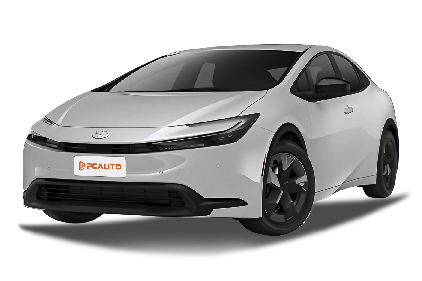Q
What is the price of Toyota Prius hybrid battery
In Malaysia, the replacement cost of Toyota Prius hybrid batteries typically ranges from RM8000 to RM15000, depending on the battery model, supplier, and whether to choose an original or third-party replacement solution. Original batteries may have a higher price but enjoy a longer warranty period, while third-party options may be more economical but require careful selection of reliable suppliers. The lifespan of hybrid batteries is usually 8 to 10 years or 150000 to 200000 kilometers of driving. Regular maintenance, such as avoiding overcharging and discharging and maintaining good operation of the battery cooling system, can extend their service life. In addition, the Malaysian government provides certain tax incentives for hybrid and electric vehicles, which may reduce overall costs in long-term use. It is recommended that car owners consult authorized service centers for accurate quotes and warranty details when they need to replace batteries.
Special Disclaimer: This content is published by users and does not represent the views or position of PCauto.
Related Q&A
Q
Can you jump a 2023 Prius?
Yes, the 2023 Toyota Prius can be jump-started to restore power. However, you need to pay attention to some key steps to ensure safety. This vehicle is equipped with a hybrid system. Its 12V auxiliary battery (usually located in the trunk or under the rear seats) is used to start the vehicle's electronic system, not the drive motor. When jump-starting, you first need to find the positive and negative terminals of the 12V battery (some models may have dedicated jump-start points). Use standard jump-start cables to connect to the battery of another vehicle or an external power source. Start the rescue vehicle and maintain its engine speed to charge the battery. Once the Prius dashboard is powered on, you can try to start the car. After the hybrid system starts, it will automatically charge the 12V battery. The hot and humid climate in Malaysia may accelerate battery aging. It is recommended to regularly check the battery status. If the battery frequently runs out of power, it may indicate that the battery life is coming to an end or there is a parasitic discharge problem in the vehicle, and timely maintenance is required. It's worth noting that the 12V battery capacity of hybrid models is usually smaller than that of traditional fuel-powered vehicles. Therefore, they are more susceptible to the impact of long-term parking or leaving the lights on. It is recommended that car owners carry a portable emergency power supply with them to handle unexpected situations.
Q
Is the Prius 2023 self-charging?
Yes, the 2023 Toyota Prius is a "self-charging" Hybrid Electric Vehicle (HEV). It charges its battery through the kinetic energy recovery system during vehicle operation and the engine running, without the need for an external power source to plug in. Specifically, the hybrid system of the Prius converts kinetic energy into electrical energy and stores it in the battery when braking or coasting. Meanwhile, the battery is also charged when the engine is running. Therefore, car owners don't need to charge the vehicle additionally like they do with Plug-in Hybrid Electric Vehicles (PHEVs) or Electric Vehicles (EVs). For users in Malaysia, this design of the Prius is very convenient because the local charging infrastructure may not be as well-developed as in some other countries. The self-charging hybrid vehicle can not only enjoy the energy-saving advantages of electric drive but also avoid the hassle of charging.
In addition, the 2023 Prius performs excellently in terms of fuel economy and emissions, making it very suitable for the urban road conditions in Malaysia, especially in the frequently congested driving environment. It should be noted that although the Prius is a self-charging hybrid vehicle, it cannot travel long distances solely on electricity like a pure electric vehicle. Its electric mode is mainly used for assisting driving and short-distance, low-speed driving.
Q
Do you have to charge the 2023 Prius?
The 2023 Toyota Prius, as a hybrid model, doesn't need to be externally charged like a pure electric vehicle when used in Malaysia. This is because it automatically charges the battery through the kinetic energy recovery system during vehicle operation and the engine's running. This design is highly suitable for Malaysia's driving environment, especially in congested urban traffic, where it can fully demonstrate its energy-saving advantages.
It's worth mentioning that the 2023 Prius actually offers a plug-in hybrid version (Prius Prime). If you choose this version, you need to externally charge it regularly to get a longer pure-electric driving range (about 70 kilometers). This is very practical for daily short-distance commuting and can further reduce fuel consumption.
The Malaysian government currently offers certain tax incentives for hybrid and electric vehicles. So, both the regular hybrid and plug-in hybrid versions are worth considering. Hybrid technology performs stably in tropical climates, and the battery cooling system has been optimized, making it suitable for Malaysia's hot and rainy climate conditions.
If you often drive long distances, the regular hybrid version will be more convenient. However, if you mainly drive in the city and have the conditions for home charging, the plug-in hybrid version will be a more economical and environmentally friendly choice.
Q
How big is the fuel tank on a 2023 Prius?
The fuel tank capacity of the 2023 Toyota Prius is approximately 43 liters. This design balances fuel economy while ensuring sufficient driving range, making it suitable for the daily commuting or long-distance driving needs of Malaysian users. As a representative of hybrid models, the Prius can significantly reduce fuel consumption through its efficient gasoline-electric collaborative system. With a 43-liter fuel tank, it can provide a driving range of about 800 to 900 kilometers under combined driving conditions, which is very suitable for the Malaysian consumer group that faces high oil prices and values environmental protection.
It's worth noting that the fuel tanks of hybrid models are usually smaller than those of pure gasoline vehicles because their electric systems share part of the power demand. Car owners can further optimize fuel consumption by reasonably using the EV all-electric mode. For users who often travel across states, it is recommended to plan the charging routes in combination with the Prius' energy monitoring system. Many shopping malls and gas stations in Malaysia are already equipped with charging facilities, which can fully leverage the energy-saving advantages of hybrid vehicles.
Q
How do I charge my 2023 Prius?
The 2023 Toyota Prius in Malaysia is mainly automatically charged through its hybrid system without the need for external charging. The battery will be automatically charged during driving through brake energy recovery and engine operation, so car owners don't need to take any additional actions. If you're driving the Prius Prime plug-in hybrid version, you can charge it via a household power source or a public charging station. When using household charging, make sure the voltage is stable and a dedicated charging cable is equipped. For public charging, it needs to be compatible with the Type 2 interface. It takes about 2 hours to charge the battery to 80%. It is recommended to regularly check the battery status to ensure its efficiency. Due to the hot climate in Malaysia, it's advisable to avoid long-term exposure to the sun to extend the battery life. Hybrid cars are more fuel-efficient when driving at low speeds in the city, which is suitable for the traffic conditions in Malaysia. For more details on charging, you can refer to the owner's manual or consult a Toyota-authorized service center.
Q
What type of gas does a 2023 Prius take?
The 2023 Toyota Prius in Malaysia is recommended to use RON95 unleaded gasoline. This is the fuel type officially recommended by Toyota for this model, which can ensure the efficient operation of the engine and take fuel economy into account. As a hybrid model, the Prius's Atkinson cycle engine has certain requirements for fuel quality. The octane number of RON95 is suitable for its compression ratio design. Meanwhile, RON95 is widely available at gas stations in Malaysia, making it very convenient to use. It's worth noting that although RON97 has a higher octane number, unless the vehicle specifically requires it, using RON97 won't bring any additional performance or fuel-saving advantages. Instead, it will increase the cost of vehicle use. Car owners in Malaysia also need to pay attention to choosing gas stations with a good reputation to ensure fuel quality and avoid engine carbon deposits or oxygen sensor damage caused by poor-quality gasoline. The maintenance of the battery pack of the hybrid system is also very important. Regular maintenance can extend the battery life. In addition, the hot and humid climate in Malaysia places high demands on the heat dissipation of the hybrid system. It is recommended that car owners regularly check the cooling system as required by the manual.
Q
Does the 2023 Prius have a solar roof?
The 2023 Toyota Prius does offer an optional solar roof configuration in some overseas markets. This technology can use the solar panels on the roof to provide auxiliary charging for the hybrid battery. Meanwhile, it supports powering in-vehicle electrical appliances when the car is parked. However, it should be noted that whether the version introduced in the Malaysian market is equipped with this function should be based on the local Toyota official configuration list.
Solar roof technology has been gradually applied in the new-energy vehicle field in recent years. In addition to Toyota, other brands such as Hyundai and Tesla have also introduced similar designs. Its actual performance is greatly affected by sunlight conditions. In a tropical country like Malaysia, it can theoretically play a better role, but the specific charging efficiency also depends on the area of the photovoltaic panels and the technical solution.
It is recommended that consumers interested in this technology can directly consult Malaysian Toyota dealers to obtain detailed local configurations. At the same time, they can also learn about the adaptation technologies of new-energy vehicles from other brands in tropical climates, such as battery cooling systems or high-temperature protection designs. All these can help better maintain electric and hybrid vehicles in Malaysia's hot and humid environment.
Q
Does a Prius 2023 have a transmission?
The 2023 Toyota Prius is indeed equipped with a transmission system. However, it uses Toyota's unique Electronic Continuously Variable Transmission (ECVT), which is fundamentally different from the mechanical gearboxes of traditional fuel-powered vehicles. The ECVT achieves power distribution through the coordinated operation of the electric motor and the planetary gear set. It doesn't have the fixed gears of a traditional gearbox, so the driving experience is smoother and more efficient. This design is one of the cores of hybrid vehicles, which can intelligently switch between electric-motor drive, engine drive, or hybrid drive modes according to driving conditions, significantly improving fuel economy.
For users in Malaysia, the Prius' ECVT system performs exceptionally well in congested urban roads. It not only reduces the jerks caused by frequent gear-shifting but also lowers fuel consumption through energy recovery. It should be noted that the key points for maintaining a hybrid vehicle lie in the battery pack and the electronic control system. It is recommended to have regular inspections at an authorized service center to ensure the long-term stable operation of the system. Compared with traditional gearboxes, the ECVT has a simpler structure and a lower failure rate. However, if any abnormalities occur, professional technicians with specialized equipment are still required for diagnosis. Other brands, such as Honda's hybrid models, also use similar technologies, but the specific implementation methods have their own characteristics.
Q
Is 2023 Prius AWD or FWD?
The 2023 Toyota Prius is available in two drivetrain versions in the Malaysian market: Front-Wheel Drive (FWD) and All-Wheel Drive (AWD). Consumers can choose according to their needs. The AWD version achieves four-wheel drive functionality through a rear-mounted motor, enhancing stability on slippery roads. On the other hand, the FWD version focuses more on fuel economy. Given Malaysia's rainy climate, the AWD system can improve driving safety in rainy weather. However, the FWD version, with its simple structure and lighter weight, is also highly efficient for daily city driving. As a hybrid model, the drivetrain choice of the Prius doesn't affect its low fuel consumption advantage. All models are equipped with a 2.0L hybrid system, with a significantly improved combined power output while maintaining the reliability that Toyota hybrids are known for. When Malaysian consumers are choosing a car, they can weigh the road conditions and their budgets. If they often encounter rough roads or travel in rainy days, the AWD version is more practical. If their driving is mainly for city commuting, the FWD version offers better cost - effectiveness. Additionally, the 2023 Prius has also been upgraded in terms of chassis and design, with a lower drag coefficient, more appealing handling, and a better - looking exterior, making it suitable for local users who value environmental protection and technology.
Q
Does the 2023 Prius have four doors?
In 2023, the Toyota Prius indeed features a four-door design, continuing its positioning as a practical hybrid family car. The five-seat layout and the structure that facilitates rear-seat passengers getting on and off are highly suitable for the daily use of Malaysian families or urban commuting. This fifth-generation model is built on the TNGA-C platform. The car body is lower and the wheelbase is longer. The opening angle of the rear door reaches 80 degrees, which is relatively large in its class, making it convenient to install child safety seats or carry items.
It's worth mentioning that the 2023 Prius offers two hybrid system options, 1.8L and 2.0L, in the Malaysian market. The 2.0L version has a combined power of up to 193 horsepower, being the most powerful performance version in all generations, while maintaining excellent fuel economy. The vehicle is also equipped with the latest Toyota Safety Sense system, including a pre-collision system and full-speed range adaptive cruise control, which is particularly suitable for the complex urban road conditions in Malaysia.
As the world's best-selling hybrid model, the battery stability of the Prius in tropical climates has also been specially optimized. Malaysian car owners don't need to worry about the impact of high temperatures on the hybrid system.
Latest Q&A
Q
How long does a 2022 BMW X4 last?
The 2022 BMW X4 can typically hit 200,000 to 300,000 kilometers or more with regular use and maintenance—its actual lifespan really comes down to driving habits, how often you service it, and the conditions it’s used in. Under the hood, the turbocharged engine and 8-speed automatic transmission are pretty solid tech-wise. Sticking to the official maintenance schedule, swapping out oil and filters on time—all that good stuff—will definitely help it go the distance. The body uses high-strength steel and has rust-proofing, so it holds up well against corrosion even in tropical climates. Something to keep in mind though: German luxury cars pack a lot of electronics. It’s smart to check the wiring and sensors regularly to avoid little glitches that humidity can cause. If you drive a mix of roads, shortening the service intervals a bit can keep the vehicle in better shape. Reliability-wise, it’s on par with other mainstream luxury brands in its class, but maintenance costs are a touch higher than non-luxury makes. Using genuine parts is the way to go to protect its value. If you’re planning to keep it long-term, hang onto those complete service records—they’ll make a difference when it’s time to sell.
Q
What are the maintenance costs for a 2022 X4 M40i?
As a high-performance SUV, the 2022 X4 M40i will have slightly higher maintenance costs than regular models, mainly depending on mileage and service items. A regular minor service, which includes oil and oil filter changes, costs around 1000 to 1500 Malaysian Ringgit. A major service, involving replacements like brake fluid and coolant, can run from 3000 to 4000 Malaysian Ringgit. Exact prices may vary by dealership and promotional offers. The 3.0-liter inline-six turbo engine delivers strong performance, but it's advisable to use the high-quality oil recommended by the manufacturer to ensure long-term stable engine operation. Also, regularly check tire wear and the brake system, as high-performance models tend to wear out tires and brake pads faster. To further control maintenance costs, consider purchasing the manufacturer's maintenance package, which usually comes with certain discounts. Additionally, developing good driving habits can extend component life, such as avoiding frequent hard acceleration and sudden braking.
Q
What are the common problems with the 2022 X4?
The 2022 X4, as a luxury sport SUV, delivers a generally reliable performance, but there are a few common issues to keep in mind. Some owners have reported occasional lag or black screens with the infotainment system, especially when using navigation in high temperatures. It's advisable to regularly update the system software to optimize performance. Additionally, certain models may experience slight transmission jerking at low speeds, which is often related to driving habits. Adjusting the driving mode or updating the transmission software can usually improve this. Interior trim pieces might develop minor rattles after long-term use, particularly around the sunroof and door panels. Checking fasteners during regular maintenance can effectively prevent this. While the X4's handling is excellent, the stiffer suspension tuning can compromise comfort on bumpy roads. Opting for models equipped with adaptive suspension is recommended for a better experience. Regarding fuel economy, although official figures are decent, real-world consumption rises noticeably with frequent aggressive driving—a common trait among all high-performance SUVs. For after-sales service, choosing authorized service centers ensures the use of genuine parts and professional diagnostic equipment, which is crucial for maintaining the vehicle's long-term performance.
Q
What engine is in the BMW X4 2022?
The 2022 BMW X4 offers a range of powertrain options depending on the trim level, with the most common being the 2.0-liter four-cylinder turbocharged engine (B48) and the 3.0-liter inline-six turbocharged engine (B58). The former powers the xDrive30i model, delivering around 248 horsepower, while the latter is found in the M40i, cranking out up to 382 horsepower. Both are paired with an 8-speed Steptronic automatic transmission, balancing performance and fuel efficiency. These engines feature BMW's TwinPower Turbo technology, combining direct fuel injection and Valvetronic variable valve control, which provides ample torque at low revs—great for city driving and highway cruising alike. It's worth noting that the B58 has earned a solid reputation worldwide for its impressive reliability and tuning potential, while the B48 stands out for its smoothness and efficiency. Additionally, all X4 models come standard with xDrive intelligent all-wheel drive, adapting to different road conditions and handling everything from daily commutes to occasional light off-roading. For those craving more performance, there's also the X4 M Competition, though it's a separate model line, featuring the S58 3.0-liter twin-turbo engine. When it comes to maintenance, sticking to the official schedule for regular oil and filter changes is recommended to keep the engine running at its best.
Q
How much does a 2022 BMW X4 cost?
The price of the 2022 BMW X4 varies depending on configuration and optional extras, with new car prices ranging from approximately RM350,000 to RM450,000, depending on the chosen powertrain and personalized options—for example, the performance differences between the xDrive30i and M40i directly impact the price. This model continues the X Series' coupe-SUV design, featuring either a 2.0T or 3.0T turbocharged engine, standard all-wheel drive, and intelligent driving assistance features. The interior boasts leather seats and the latest iDrive system, blending technological flair with luxury. It's worth noting that used car prices are influenced by condition, mileage, and warranty remaining, typically costing 20% to 30% less than new models. Rivals like the Mercedes-Benz GLC Coupe or Audi Q5 Sportback are also worth considering, but the BMW X4 appeals to many young buyers with its sporty tuning and brand recognition. Before purchasing, it's advisable to check the official website for the latest promotions or visit a dealership for a test drive to get accurate pricing and experience its dynamic performance.
View MoreRelated News

Toyota Supra (A90) will be discontinued next March, and the next generation model may be led by Toyota.
JohnNov 14, 2025

Which one is better, Honda City or Toyota Vios?
AshleyNov 11, 2025

2026 Toyota Hilux Travo released, the brand-new exterior and interior are highly anticipated
LienNov 11, 2025

Should I choose the top-tier Toyota Corolla Cross, or the entry-level Fortuner?
Kevin WongNov 6, 2025

Why are people more willing to choose Toyota Hilux instead of Isuzu D-Max?
JamesNov 3, 2025
View More


















Pros
Cons